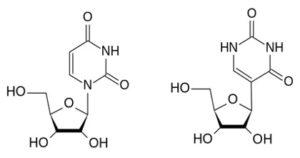
Figure 1: This depicts the ‘undifferentiated’ nature of pluripotent stem cells
Source: Wikimedia Commons
Stem cell therapy has emerged as a potential treatment for Type 1 diabetes, Parkinson’s disease, spinal cord injuries, and a wide range of other illnesses. It is at the forefront of regenerative medicine – an arm of clinical practice that seeks to repair or replace damaged tissues. At their root, stem cells are undifferentiated cells. Pluripotent stem cells are essentially undecided, so can become anything from liver to skin tissue. Multipotent stem cells are more limited in what tissue they can become (often only able to become the tissue from the region they were harvested) but can still regenerate new cells. This has given scientists the idea to program stem cells to replace damaged or nonfunctional cells within the body. They accomplish this by influencing stem cells to choose to identify as the cells that are damaged or nonfunctional in a patient of interest. With this premise, however, scientists have run into a significant problem: once stem cells differentiate, how are they supposed to know where they need to go in the body?
A previous study led by Dr. Evan Snyder from Sanford Burnham Prebys Medical Discovery Institute demonstrated that stem cells are attracted to sites of inflammation (Sanford Burnham, 2020). Therefore, if scientists desire stem cells to migrate to a particular location, it may seem logical to simply induce inflammation in a desired region or hope stem cells are attracted to the damaged region due to inflammation from the injury. However, inducing inflammation is not a proper tool to use for therapeutic ends. For one, the inflammatory response has harmful side effects. Furthermore, natural inflammation from a disease may fade over time, removing the signal to direct stem cell migration (Sanford Burnham, 2020). As such, a more effective guidance technique is needed.
In 2020 Dr. Snyder’s group, with aid from the California Institute for Regenerative Medicine (CIRM), published a study on the first drug that can guide stem cells to a desired location. During a normal inflammation response, the body releases the chemokine CSCL12. Researchers demonstrated that neural stems cells, which expressed the receptor CXCR4, were attracted to a site of inflammation due to the presence of CSCL12 (Lee et al., 2020). The binding of CXCR4 and CSCL12 triggers the neural stem cells to begin replacing damaged cells but also triggers further harmful downstream inflammation. The researchers sought to utilize the attraction between CXCR4 and CSCL12 while preventing further inflammation (Lee et al., 2020). To accomplish this, they chemically modified CSCL12 such that it had an increased affinity for CXCR4, but did not cause additional inflammation upon binding. This mutated molecule is known as SDV1a (Lee et al., 2020). Researchers hypothesized that SDV1a could be injected into a site of inflammation, such as a damaged spinal cord, and would guide stem cells to the injury without worsening inflammation.
The initial results of SDV1a trials are extremely promising. Researchers injected Sandhoff’s mice (Sandhoff’s is a neurogenerative disease) with SDV1a and human neural stem cells. They found that the mice had preserved motor function, delayed symptom onset, and an extended lifespan compared to Sandhoff’s mice that did not receive SDV1a. There were no signs of inflammation either (Sanford Burnham, 2020). Although this drug is still in its infancy, researchers are eager to expand treatment to other neurogenerative diseases. They plan to study the impact of SDV1a on mice with ALS next, and researchers believe that “this drug’s mechanism of action may potentially benefit…non-neurological conditions such as heart disease, arthritis and even brain cancer” as well (Sanford Burnham, 2020).
References
Lee, J. P., Zhang, R., Yan, M., Duggineni, S., Wakeman, D. R., Niles, W. L., … & Gonzalez, R. (2020). Chemical mutagenesis of a GPCR ligand: Detoxifying “inflammo-attraction” to direct therapeutic stem cell migration. Proceedings of the National Academy of Sciences, 117(49), 31177-31188.
Sanford Burnham Prebys Medical Discovery Institute. (2020, November 24). World’s first: Drug guides stem cells to desired location, improving their ability to heal. ScienceDaily. Retrieved December 19, 2020 from www.sciencedaily.com/releases/2020/11/201124101031.htm
Related Posts
Researchers produce important RNA subunit using a biocatalyst for the first time
Figure 1: The image on the left displays a standard...
Read MoreCOVID-19 Clinical Trials and Racial Disproportionality
Figure 1: A doctor drawing blood from a patient as...
Read MoreMaddie Brown



